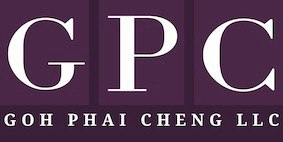30 August 2014, Singapore. An application by Japan’s Towa to inspect patent infringing product against Singapore’s ASM Technology has been rejected by the Singapore High Court judge.
ASM Technology Singapore Pte Ltd (“ASM”), a Singapore subsidiary of a Hong Kong listed company, has been sued for patent infringement by Japanese company Towa Corporation (“Towa”) in the Singapore High Court (Towa Corporation v ASM Technology Singapore Pte Ltd and anor [2014] SGHCR 16).
Towa claimed that ASM’s IDEALmold machine infringed its Singapore Patent Application No. 1996045588 (Publication No. 49740) titled “Method of and Apparatus For Moulding Resin to Seal Electronic Parts”, a patent filed during the old “self-assessment” patent system era, as opposed to the new positive-grant patent system.
Key to this patent infringement interlocutory hearing is the reference to “property” in Order 29 rule 2(1) of the Rules of Court (“ROC”) that gives jurisdiction for the court to grant the inspection of a product. This is the first local case on the interpretation of this term in the context of this rule in the ROC.
Towa argued that it was asking for an inspection of the infringing product. However, the Judge ruled that by asking to inspect and film the machine while “in operation” and “not in operation” was an inspection of the process, and not the product.
Towa also asked for the alleged infringers to be present during inspection to answer on record all technical questions that it may have in relation to the operation of the alleged infringing device. The Judge prohibited this as being tantamount to seeking interrogatories and/or cross-examination without judicial oversight of the questioning process.
Towa reasoned too that it had to see the machine in operation so as to see the “detachably mounting” or “detachably mountable” element. The Judge rejected this request explaining that it would be similarly counterintuitive to request to observe a product in operation in order to determine if its batteries were indeed removable.
Applications
Enforcing patent rights
1. While a granted patent looks impressive in a company’s IP portfolio, enforcing and protecting it requires, among other things, strategising, an initial thorough evidence-gathering exercise, a long-term view of IP protection and financial muscle. If a company does not protect its IP asset, it may then be unable to monetise its real asset. Homegrown Singapore firm Trek 2000’s patent battles over their ThumbDrive had cost them more than S$20 million. Its CEO Mr Henn Tan conceded that it was a costly lesson. On the flipside, Singapore Creative Technology’s lawsuit against Apple earned them US$100 million when the dispute was settled out of court.
Intellectual Property Financing Scheme
2. Enforcing a patent or investing in R&D requires capital. A S$100 million IP Financing Scheme by the Singapore Government administered by the Intellectual Property Office of Singapore may provide a helpline. Arguably, enforcing and protecting your patent rights is one of the many business strategies to grow and expand a business. While this scheme currently seems patents-centric as it favours technology companies with a granted patent (perhaps it would be more appropriate to call it “Patents Financing Scheme”), it is hoped that the eligibility for the scheme, in due time, would go further by accepting loans applications from IP-rich, asset-light technology companies which prefer trade secrets to patenting.
Trade Secrets
3. Given that full disclosure is not required for the protection of trade secrets, thus making reverse engineering difficult, trade secrets protection can be more advantageous than patenting in appropriate circumstances. US’s Coca-Cola has one of the world’s best-kept trade secrets since 1886. Its trade secret for the formula of its popular soft drink is known to be worth millions of dollars. A different story unfolds at US’s DuPont whose titanium dioxide trade secrets were stolen by an ex-DuPont retired employee and sold to China. While justice prevailed, with the US courts successfully imposing on the culprits a fine, a jail sentence, and an order to pay DuPont, DuPont’s titanium dioxide production business suffered irreparable loss, having to close it with liabilities amounting to millions and there was also doubt whether DuPont could recover the full debt from the culprits.
Singapore as a choice venue for IP dispute resolution
4. Is Singapore, with its IP protection laws and efficient legal system, a choice venue for IP dispute resolution? Is Singapore a Global IP Hub in Asia where new developing frontier technologies are robustly protected? The Singapore court’s decision on patent infringement in this case (if it proceeds to trial without being settled out of court) would be noteworthy.
WIPO Expert Determination
5. Instead of litigation, have the parties considered a more cost-effective, quicker (and likely less hostile) WIPO Expert Determination option under the WIPO Expert Determination Rules for their patent proceedings? To address cross-border patent disputes in multiple jurisdictions involving complex technical or scientific issues, technology companies should consider the WIPO’s Arbitration and Mediation Centre Singapore office (two blocks away from our Maxwell House main office) and the WIPO List of Neutrals (on which our Mr Goh Phai Cheng, Senior Counsel sits) to settle their disputes out of court and perhaps more importantly, out of the public eye.
Disclaimer: The opinions expressed in this article are the sole responsibility of the author and do not necessarily reflect any position or policy of Goh Phai Cheng LLC (‘the firm’). While every effort has been made to ensure that the information contained in this article is correct, neither the author nor the firm can accept any responsibility for any errors or omissions or for any consequences resulting therefrom. Nothing in this article is intended to amount to legal advice and professional opinion should be sought on a case-by-case basis.
Last Updated: 9 September 2014
